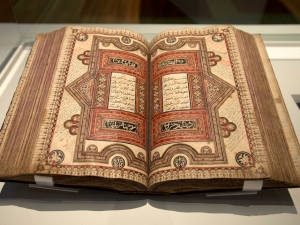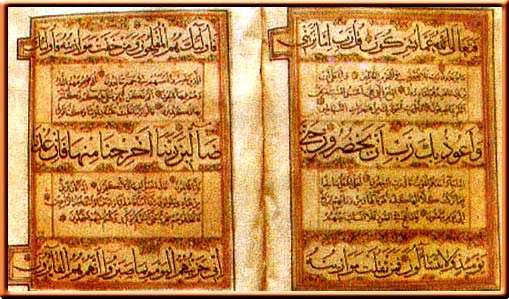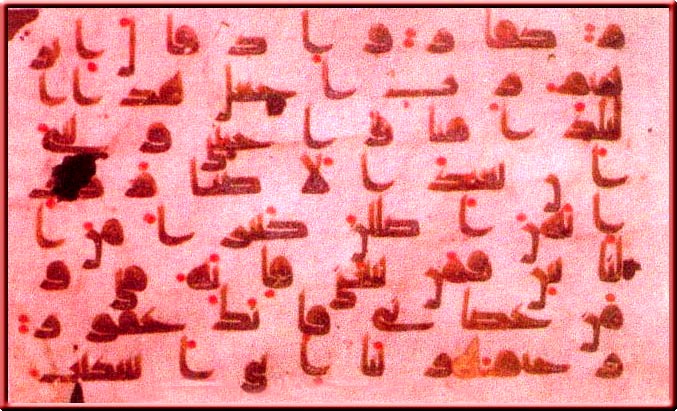
The 9th or 10th century Qur’an to which this folio once belonged has often been given a Maghribi attribution because sections of the manuscript were purportedly discovered in the mosque at Qayrawan, Tunisia. At only five lines of fine kufic script per page, the cost of production would have been high, as its completion would have required a proportionately greater amount of vellum, ink, colours, and gold. Vocalisations appear in the form of red, blue, and green dots. Singular verses are divided by gold rosettes, while every tenth verse receives an abjad letter, echoed in the margin within a larger medallion containing the verse count in gold (in this case, thalathun for “thirtieth”).
This will be on display at Aga Khan Museum






